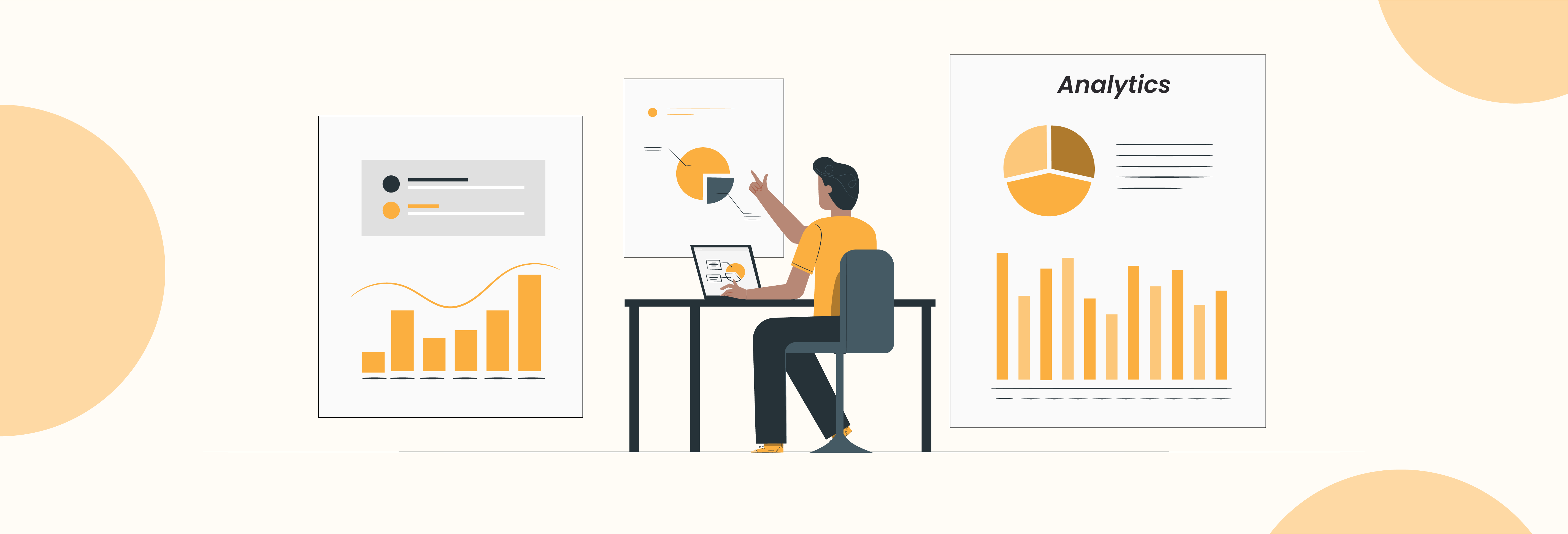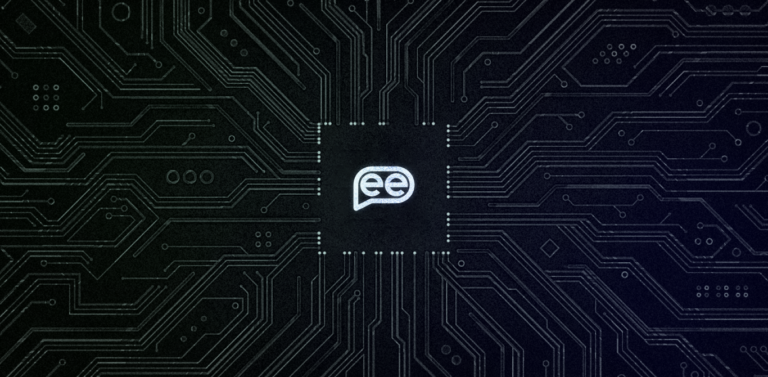From finding the right talent and hiring them for the relevant jobs to onboarding the new hires smoothly and managing payroll — an HR professional has endless tasks to perform. Not to mention the multiple queries they receive daily in the form of emails, phone calls, live chat messages, et al. When not handled timely, queries start falling through the cracks, and employee satisfaction decreases.
And this is why HR ticketing systems are gaining traction. An HR ticketing system allows HRs to stay on top of employee queries and solve them as fast as possible to keep them happy and loyal to the company.
This blog highlights everything you need to know about an HR ticketing system, from its features to use cases. Explore how analytics of your HR ticketing system can help you improve the overall employee experience.
What is an HR ticketing system?
An HR ticketing system, also known as an HR helpdesk, is a technology that allows HR professionals to manage and solve employee queries efficiently. It is a common platform for the employees and HR department, where employees can address their problems regarding payroll, onboarding, medical or disability leave, company policies, and a lot more.
An HR ticketing system fosters clear and quick communication where employees do not have to struggle through back-and-forth emails to get their answers.
With an HR helpdesk, HRs can manage requests from multiple platforms. They can also get insights into the most frequent employee cases to find solutions to fix them. HR teams can create tasks and alerts for each ticket and categorize them by topic or urgency.
Furthermore, an HR ticketing system boosts the efficiency of HR processes by making sure the ticket reaches the right person at the right time. For example, if you raise a request against the payroll department, the system will automatically create a ticket and send it to the payroll manager.
Additionally, there are other features that an enterprise or HR should look for in a modern HR ticketing system. The following section gives you a detailed insight into the HR ticketing system features.
What are the features that you should look for in an HR ticketing system?

Some essential features of a modern HR ticketing system are:
Knowledge base
If employees have questions regarding any common topic, such as appraisals, vacations, leaves, payroll, or onboarding, they usually email the HR team. Constantly managing thousands of requests creates a significant challenge that a knowledge base system can help HRs overcome.
A knowledge base or a knowledge management system is the backbone of a robust employee support service. Your employees can refer to it to get answers to common questions, minimizing the time spent searching for information. It offers a quick response through a searchable content database, resulting in fewer tickets and more satisfied employees.
For example, if an employee wants to know the procedure to take a medical leave, the HR ticketing tool automatically suggests the related articles and FAQs from the knowledge base.
Self-service portal
HR teams can integrate a self-service portal with the ticketing software to automate responses to common questions about HR functions. A self-service portal allows employees to find answers to their questions. They can search for knowledge base articles and FAQs, visit a community forum, and use the provided tools to contact HR teams. Employees can submit a new request, track the status of their ticket, and view announcements.
Offering a self-service portal is a tactic that allows employees to help themselves, saving a lot of valuable time of all. Employees feel happy because they do not have to depend on the HR team for solutions. And your HR team feels happier because there is a reduced number of incoming tickets, which means they have more time to focus on higher-value activities.
Reporting & analytics
Employees want prompt answers to their queries. They also want to solve their problems using a knowledge base or self-service portal. To ascertain that HRs are delivering on their promise, HRs need metrics to track employee satisfaction and measure the efficiency of their teams’ employee support efforts.
An HR ticketing system provides HR professionals the reporting and analytics capabilities to monitor and adjust their operations for better employee support.
The metrics are as follows:
- Ticket volume: number and type of incoming requests
- Resolution time: how quickly the HR team resolves employees’ queries
- Response time: the time between creating a support request and the first action taken by HR.
- Article views: what number and type of articles in your knowledge base are getting the most views
SLA management
Various HR ticketing systems are equipped with a unique and robust service level agreement (SLA) management system that allows HR teams to respond to queries quickly, every single time.
An SLA policy is like a deadline within which the HR team must respond and resolve employee queries. It helps set targets for your first response, the time taken for tickets to get assigned to a member, the time to close them, etc. Further, HR teams can create different SLA policies for multiple tickets. For example, set longer SLA targets for unimportant queries or shorter targets for urgent ones.
HRs can also set up reminders to notify the right people about the ticket status so HR teams can take the best steps as fast as possible.
A modern HR ticketing system with the above-mentioned features can help your organization reap multiple benefits. Know what these benefits could be.
How can an HR ticketing system benefit your organization?
Following are the benefits of an HR ticketing system:
Ensures smooth onboarding
Recruiting top talent in your organization is just half the battle. The main challenges are to onboard new employees effectively and acquaint them with their job roles and co-workers as quickly as possible. You might already have an onboarding system in place. But, you need an HR helpdesk system to speed up and standardize the overall recruitment and onboarding process.
Almost every new employee might have questions regarding the onboarding aspects such as documentation, training, and more. When you stay organized and respond to the employees’ queries on time, they feel valued and establish a strong positive impression of your company.
Boosts employee engagement
Picture this – you have a hardworking employee who raises a ticket to ask for urgent medical leave. They wait patiently for the response but hear the reply after three days. Even though the request is eventually approved, their frustration and the long time between submission and approval are hard to ignore.
HR ticketing systems can help erase the communication gaps by establishing reliable standards for handling employee requests quickly. The goal here is to avoid negative employee experiences which can impact their engagement, productivity, and morale.
Remember that people join your organization for the benefits you offer them. If they have to struggle to get them, nothing can stop them from leaving your company and, worse, disparaging your company’s image.
Resolves issues before they get worse
The HR ticketing tool provides insights to help your HR team identify the trends and gaps in employee support service, such as ticket response time, resolution time, backlogged tickets, and the number of tickets received per day, week, or month.
These metrics showcase how well your support team is handling requests to let you make adjustments whenever required. Not only that, when you identify the most common questions and current trends, you can resolve them before they negatively affect employee satisfaction.
Simplifies communication
Technical issues can be annoying and often require more than one person to tackle them. Also, as employees are your number one priority, you have to keep them up-to-date about the situation and how close you are to resolving it.
It is where an HR ticketing system can help foster clear communication via internal messaging between relevant departments of the organization. It ensures a cohesive flow of information between team members, resulting in speedy resolution of technical issues.
Use cases of a modern HR ticketing system

Here are a few examples of how organizations can use an HR ticketing system to streamline the HR process and boost employee satisfaction:
Hiring and onboarding
An HR helpdesk enables the HR team to manage the recruitment and onboarding processes by keeping all the information about candidates at a central location. For example, you can store candidates’ interaction and interview history with the company, share notes about the applicants with other team members, and leave comments or feedback. Further, with the HR helpdesk system, you can turn each recruitment task into a ticket so your team can document every step of the hiring process.
After hiring, to ensure new hires have a smooth onboarding process, an HR helpdesk can prove useful to new employees in finding the relevant information like benefits, payroll, training material, etc. Simply put, it will automate the entire onboarding process by offering employees a self-service option to complete all the steps independently.
Learn about the leave policy
Suppose an employee joins an organization before having children. Now, as an expectant parent, the employee wants to know about maternal or paternal leave policies and the benefits offered during the time off. Since the employee can feel reluctant to bring this family-related query to HR, the knowledge base feature can help.
The employee can directly enter the query in the helpdesk and find articles and FAQs related to the same. Even though the HR professional would have answered the inquiry without hesitation, it made the employee more comfortable and gave a sense of privacy apart from saving their time and effort in raising the request and waiting for the response.
Upload employee information on the go
Many new hires start their new jobs at the same time. Most of them even work remotely in different time zones. Reaching out to new hires individually and asking for their information can be tedious.
Instead, HRs can create a self-service portal in their HR helpdesk software — new employees can enter their information, upload necessary documents, and keep track of their onboarding process.
It minimizes the waiting time in collecting relevant information and entering the same individually.
Boost employee satisfaction rate
Suppose an HR manager runs a survey of all employees to measure their satisfaction rates. They find that employees of all departments are satisfied except one. To learn about the reason, they dig deeper into the tickets issued by that employee. HRs find that one of the workers has raised unreasonable requests and has even spread some rumors in the workplace. If allowed to continue, this behavior can become a significant problem for the organization.
Rather than bringing up an employee’s name, HR managers can address the problem quietly and re-establish satisfaction within the team. Hence, with the HR ticketing system, the HR team can know the reason behind the low satisfaction rates and take steps to improve it — keeping the employee’s information confidential. It saves the workers from getting humiliated in front of others and instills loyalty toward the organization.
Using analytics of the HR ticketing system to enhance employee experience

An HR ticketing system provides colossal information and data. Analytics is one of the crucial features of an efficient ticketing system. It helps you get insights into the requests you receive and see what employees search for, how their queries get resolved, and how your HR team performs collectively.
These also provide actionable information for every stage of an employee’s journey — from their recruitment and onboarding to training and exit interviews. For example, you can decide on the upcoming articles or FAQs that you would publish on your knowledge base.
Below are a few HR ticketing metrics you can measure to modify and improve your HR processes for a positive employee experience:
Ticket volume
Your HR team must monitor the number of requests or support tickets they receive and manage during any given time. Once they get a sense of how many tickets their team can handle in a day, week, or month, they can generate powerful insights to enhance their team’s performance.
Also, do not forget to consider the nature of requests — for instance, see if these requests could be resolved through knowledge base articles or self-service portals, or do they require a human touch? Not all tickets are equal, and understanding this will allow you to prioritize the most important ones.
Response time
The response time refers to how quickly your HR team responds to an employee query. The longer it is, the more you reduce your chances of boosting employee satisfaction.
Evaluating this metric can help you learn the reasons for the delay and take the necessary steps to improve it. If you are transparent about the long wait times instead of hiding it from employees and keeping them waiting, they will usually understand. In a nutshell, quick resolutions lead to happy employees, improving their overall experience.
Resolution time
Resolution time refers to the time taken to resolve a support ticket. It is a crucial metric that indicates how long an employee should wait for their query to resolve.
The longer the wait time, the more frustrated your employees feel. So, aim to shorten your resolution time for your team to focus on more high-value tasks, leading ultimately to a positive employee experience.
Studying this metric can also reveal the reasons behind slow resolution time, such as the complexity of the ticket, unavailability of resources, agents, or tools, and so on.
Helpdesk history
Helpdesk history can tell you about the opening, backlogged, ongoing, pending, and active tickets. In other words, it includes every single query your employees raise for knowing company-related details.
The helpdesk history is crucial in understanding the most common queries of your employees, the reasons behind the backlogged tickets, and the nature of the questions. It can help develop articles for your knowledge base so employees can easily find answers on time.
Overall, analytics is crucial to streamline your workflows, improve team performance, and boost employee satisfaction — resulting in a top-notch employee experience.
Integrating your HR ticketing system with AI
Providing a positive employee experience is easier if you use an excellent HR ticketing system to resolve employee queries as and when they arise. When employees feel heard, they are more engaged and productive and stick around for longer.
From recruiting and onboarding to training and offboarding, HR help desks provide a plethora of metrics you can use to modify your HR processes and resolve queries faster. Moreover, integrating artificial intelligence within your ticketing system works wonders in responding to tickets in real-time. And with tools like Leena AI, it has become possible.
Want to explore more? Book a demo today!






